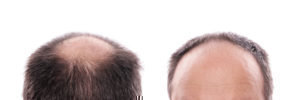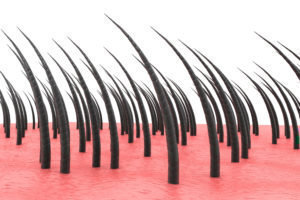Will Finasteride work forever?
The quest for a cure for hair loss has a long reach into human history and even features in the Ebers Papyrus: the oldest medical reference in existence. This medical text dating back to 1550 B.C. contains a number of recommended cures for ancient Egyptians including a remedy for hair loss in which a mixture of fats from a hippopotamus, crocodile, tomcat, snake and ibex are added to porcupine hair and then boiled in water before being applied to the scalp and kept in situ for four days. The ancient Greek physician: Hippocrates, was also known to suffer from male pattern hair loss (androgenetic alopecia) and was said to have prescribed a topical concoction of opium, horseradish, pigeon droppings, beetroot and spices. Whilst that has never been known to cure or remedy hair loss, Hippocrates did make the important observation that eunuchs didn’t suffer from hair loss. His observation was on the right track as centuries later we know that androgens (male hormones synthesised in the testes) play a key role in mediating male pattern hair loss.

Medical science has since then made great progress in the understanding of the causes and treatment of androgenetic alopecia and today, Finasteride is one our main treatment options. It works by reducing levels of a hormone (dihydrotestosterone) with the desired effect of increasing hair growth and preventing further hair loss. The effect of dihydrotestosterone on susceptible hair follicles in the scalp is to miniaturise them and increase the phase of dormancy in hair follicles resulting in a general reduction in hair growth rate. In addition, the hairs produced by these affected follicles become progressively smaller in diameter, shorter in length and lighter in colour until eventually, the follicles simply shrink completely and stop producing hair. The introduction of Finasteride represented a big breakthrough in the treatment of androgenetic alopecia because it was the first drug that targeted treatment for this condition on a molecular level. Finasteride is essentially an enzyme inhibitor; specifically of type II 5α-reductase. Hair follicles contain type II 5αreductase and finasteride acts to stop this enzyme from converting testosterone into dihydrotestosterone which in turn lowers the levels of dihydrotestosterone present and stops the effect it has on hair follicles.
In a nutshell, Finasteride inhibits the process responsible for the formation of dihydrotestosterone minimising its damaging effect on scalp hair follicles. This can lead to the process of hair loss to be reversed or for progression of hair loss to be minimised. When you use Finasteride, it can produce a rapid reduction in dihydrotestosterone levels, reaching significant suppression within 24 hours of dosing although hair regrowth is not usually noticed for at least 4 to 6 months after starting treatment. Finasteride works best if used in the early stages of androgenetic alopecia as it is much less effective when hair loss becomes established. It should also be noted that it needs to be taken continuously to be effective. If the treatment is stopped, the action of the enzyme: type II 5αreductase will reinitiate causing levels of dihydrotestosterone to rise again and inevitably start causing hair loss to re-establish. Finasteride is essentially a suppressive treatment and not curative. If Finasteride treatment is discontinued, any beneficial effects begin to reverse by six months and by nine to twelve months after stopping treatment, it is expected that users return to their baseline state.
A common question which arises with regards to Finasteride use is how long can it keep working? A study published in 2011 gives some interesting thoughts on this. This study involved 118 men aged between 20 to 61 years with mild to moderate androgenic alopecia and considered the effect of 1 mg daily Finasteride use over a 10 year period. The aim of the study was to measure the effectiveness of Finasteride on hair growth after 5 years and then again at 10 years. The results from this study show that over a 10 year period; 21% of men had experienced increased hair growth from Finasteride use, 65% had maintained their level of hair growth and 14% had their
condition worsen. That suggests that 86% had a positive outcome of improved hair growth or prevention of further hair loss. Out of the 118 men, 5 decided to discontinue treatment before the 10 year period elapsed.
Another interesting finding from this study was there was a correlation between the results obtained after the first year of therapy and long-term efficacy. This study suggests that after 10 years, the patients who had shown improvement after the first year of treatment were more likely to improve or maintain their hair growth. Patients who had unchanged or worse results after the first year were found to be less likely to experience improvement of hair growth at 10 years. The researchers go on to say that in the group of patients that showed no improvement at all after one year with a significant decrease in hair growth could be considered to be non-responsive to long-term therapy. The dermatologists involved in this study report that the use of finasteride at 1mg a day produced significant and durable increases in hair growth in men with androgenetic alopecia and that finasteride efficacy is not expected to be reduced over time. This study concluded that Finasteride was generally well tolerated and long-term treatment led to sustained improvement.
Another article published in 2003 looked at a much larger group of men and reviewed 3 studies involving 1879 men aged between 18-41 years with mild to moderate androgenetic alopecia. Studies considered men with predominantly vertex hair loss (top of the head corresponding to the mid-scalp area) and involved 1553 men and one study enrolled men with predominantly frontal hair loss and involved 321 men. All three studies demonstrated that treatment with finasteride led to a significant improvement in hair growth and slowed further hair loss. Men who took a placebo showed significant hair loss. The researchers involved with the vertex hair loss group decided to extend the study period to 5 years. The results of these 5-year studies again demonstrated that the use of finasteride led to durable improvements in scalp hair when compared to placebo. Most (65%) of the men treated with finasteride experienced an increase in hair count at 5 years
compared to none of the men treated with placebo. There were men that had a lower hair count compared to when treatment was first started but the data supported that the average magnitude of loss was less than observed in the placebo group. An expert panel also reviewed clinical photographs taken. They confirmed that 90% of men treated with Finasteride either showed no visible hair loss or showed visible improvement over 5 years. 75% of men treated with placebo showed visible deterioration in coverage. This review echoes the initial study quoted in its views that long-term treatment with finasteride was generally well tolerated and led to significant and long-lasting improvements in hair growth and slowed the further progression of hair loss.

If you are considering using or are already taking Finasteride, a year is a good time to reassess whether it is working for you and providing you with the desired outcome. Although not all users experience improved hair growth, the majority experienced a slowing of the progression of hair loss. Men who show improvement after the first year of treatment were more likely to improve or maintain their hair growth even after ten years of treatment. Finasteride needs to be taken daily at a dose of 1 mg a day in order to achieve optimal performance from use. It is generally well tolerated and 5 and 10-year studies have confirmed that it can continue to work showing that it has the potential to produce durable increases in hair growth with no loss of efficacy over time.
References
- Miell J. and Davies Z. 2014 Clinical Biochemistry: Metabolic and Clinical Aspects (Third Edition) pp 451-460
- British Association of Dermatologists 2012 [online] http://www.bad.org.uk/shared/get-file.ashx? id=153&itemtype=document [Accessed November 2018]
- Sinclair R, 1998 British Medical Journal Sep 26; 317(7162): 865–869
- Rossi A, Cantisani C, Scarno M, Trucchia A, Fortuna M.C. and Calvieri S., 2011. Finasteride, 1 mg daily administration on male androgenetic alopecia in different age groups: 10-year followup. Dermatologic Therapy, 24, pp.455-461
- Shapiro J, Kaufman K. 2003. Use of Finasteride in the Treatment of Men With Androgenetic Alopecia (Male Pattern Hair Loss). Journal of Investigative Dermatology Symposium Proceedings, [e-journal] 8(1) pp.20-23 https://doi.org/10.1046/j.1523-1747.2003.12167.x
- Electronic Medicines Compendium 2018 [online] https://www.medicines.org.uk/emc/product/2194/smpc [Accessed November 2018]

